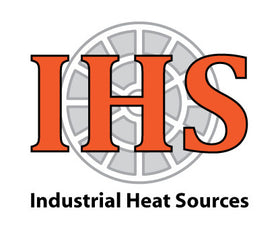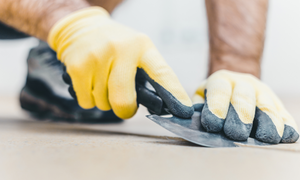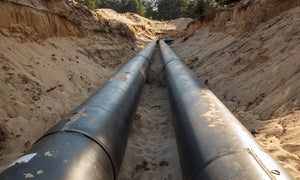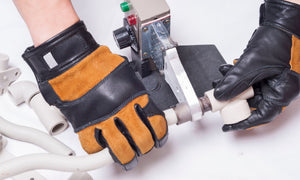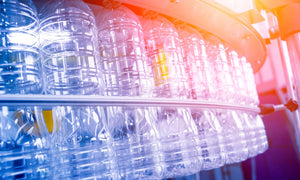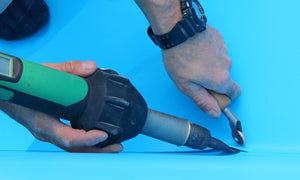The Role of Process Heat in Welding and Shaping Plastics

Plastics have become an integral part of our daily lives, used in a variety of applications ranging from packaging to automotive manufacturing. Behind the scenes, the process of molding and shaping plastic involves intricate techniques, and one key player in this field is the use of process heat. Continue scrolling to learn more about its role in these multifaceted processes.
What is Process Heating?
Before we dive into the specifics of welding and shaping plastics, it's essential to understand the significance of process heat in plastic manufacturing. Process heat involves the controlled application of heat to manipulate the physical and chemical properties of plastics. This is particularly crucial for thermoplastics, which can be softened and molded when exposed to elevated temperatures.
>>Related read: 5 Process Heat Applications and the Hot Air Tools to Use for Them
Plastic Welding with Hot Air
Plastic welding is a technique that joins plastic surfaces by melting and fusing them together. This process is analogous to traditional welding used for metals but tailored to the unique characteristics of plastics. Heat plays a pivotal role in plastic welding, as it is used to soften the plastic surfaces, enabling them to bond seamlessly.
There are various methods of plastic welding, each suited to specific applications. Hot air welding, for example, is a common method for joining thermoplastics. This process involves using a heat gun or hot air welder, such as the IHS Type 1600 Hot Air Tool, to join plastics. The surfaces are heated until they reach their melting point and then carefully pressed together, forming a bond as they cool. As with any method, the controlled application of heat ensures a strong and durable bond between the plastic components.
>>Related read: How to Execute the 4 Most Common Types of Plastic Welds
Shaping Plastics with Hot Air
When it comes to shaping plastics, hot air is a versatile option that offers unique advantages. Thermoforming is a versatile and widely used method for shaping plastics into various forms. This process involves heating a thermoplastic sheet until it becomes pliable and can be molded into the desired shape. The three main steps of thermoforming—heating, forming, and cooling—allow manufacturers to create complex and intricate plastic products with relative ease.
During the heating phase, the thermoplastic sheet is uniformly heated to its softening point. This can be achieved using various methods, including radiant heaters like the Tempco Series KRH Quartz Sheath Medium Wave Tube Radiant Heater, convection ovens, or infrared heaters like the Tempco Series CRN Ceramic E-Mitter Infrared Heater. The heating method you choose will depend on the specific requirements of the material.
Once the plastic is pliable, it is draped over a mold or formed using vacuum pressure to take on the desired shape. This step requires precision and expertise to ensure that the final product meets the specified design criteria.
Finally, the cooled and formed plastic retains its new shape, ready to be used in a multitude of applications. Thermoforming is a preferred method for manufacturing items such as packaging trays, automotive components, consumer electronics casings, and even everyday products like disposable cups.
Beyond its technical advantages, hot air thermoforming also aligns with the growing emphasis on sustainability in manufacturing processes. Unlike traditional methods that may involve excessive material waste, thermoforming allows for efficient use of materials. The process can be fine-tuned to minimize excess plastic, reducing both production costs and environmental impact.
Challenges and Solutions with Process Heating
While process heating is a fundamental aspect of plastic manufacturing, it comes with its set of challenges. One primary challenge lies in achieving uniform heating, especially in large-scale production settings. Variations in material thickness or shape can lead to uneven heating, affecting the quality of the final product. It's key to invest in advanced heating technologies, such as infrared systems or digital controllers and sensors, to ensure real-time data, precise control, and uniform temperature distribution.
Another challenge involves the selection of the appropriate heat source for specific plastic materials. Different thermoplastics have distinct melting points and sensitivities to heat. Matching the right heat source to the material is critical to prevent overheating or insufficient softening. This requires a deep understanding of material properties and constant monitoring during the heating process.
Additionally, ensuring the sustainability of process heating is a growing concern. Traditional heating methods may consume excessive energy, contributing to environmental impact. To address this, users are increasingly exploring energy-efficient alternatives, incorporating renewable energy sources and implementing insulation strategies to minimize heat loss.
As the industry continues to evolve, addressing these challenges head-on paves the way for more sustainable, efficient, and precise process heating methods.
>>Related read: Key Digital Tools for Your Equipment Lineup
Get the Right Process Heating Tools Today
Selecting the right process heating tool for your unique needs doesn’t have to be difficult—especially if you have IHS to help make your decision. With more than a decade of experience, our team at IHS will help ensure you have the right tools and accessories to be as efficient, productive, and profitable as possible. Contact our team and we'll get you started.
- Robert Heater
